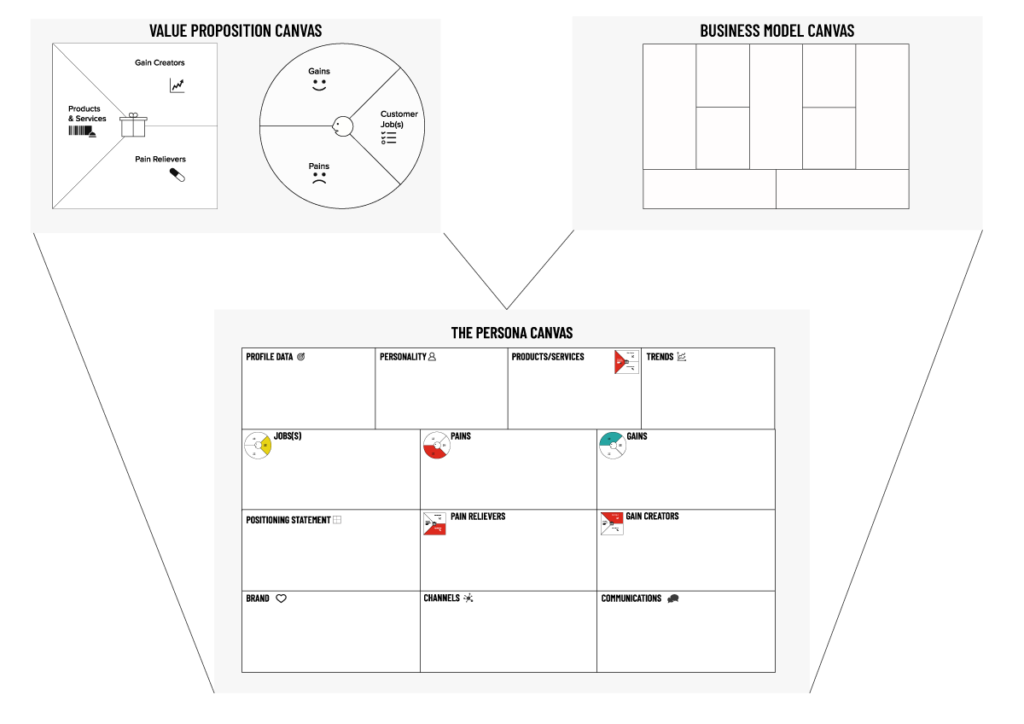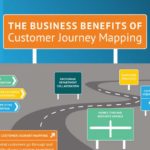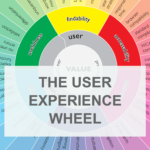User interviews are a vital part of enhancing the customer journey and improving the customer experience.
Before we get stuck into how to conduct user interviews let’s answer some of the basic questions.
Frequently Asked Questions About User Interviews
What are user interviews
A user interview is a common user research technique used typically to get qualitative information from either existing or potential users.
How do I prepare for user interviews?
First of all, identify the type of users you want to interview and the customer segment you are researching. Then determine timescales and budget, but always make sure you have a large enough number that is a representative of your target audience.
How do I prepare for user interviews?
Write an interview script with the different questions you want to cover and then test this on a few people that fir to your target audience. After testing makes the necessary adjustments. Remember to use the script as a guide, not as an absolute set of questions.
What is a contextual interview?
Contextual interviews are conducted in the natural environment which can be in a home, place of work or elsewhere. Doing the interview this way yields greater insight into how the environment and the user interact. Interviews can take place before and after a user experiences a set of jobs.
What do I do with findings from user interviews?
If you recorded the interviews then transcribe them. If you didn’t then go over each interview and note common themes and key phrases. Overall, you then need to define categories based on your theme and look for differences and common responses to the questions.
What Is The Difference Between Good And Bad UX Research?
The biggest mistake is to exclude end users from the design process. On the flip side, the more you do research, the more insights you create and the better your research outcomes.
What Are The 5 Steps Of UX Research?
Created by Erin Sanders, the Research Learning Spiral provides five main steps for conducting UX research. The first two steps are about forming questions and hypotheses, and the last three steps are about gathering knowledge through selected UX research methods.
Objectives: What are the knowledge gaps we need to fill?
Hypotheses: What do we think we understand about our users?
Methods: Based on time and manpower, what methods should we select?
Conduct: Gather data through the selected methods.
Synthesize: Fill in the knowledge gaps, prove or disprove our hypotheses, and discover opportunities for our design efforts.
Benefits of User Interviews Include
- Improve how you determine your customer segmentation process.
- Improve how your market segmentation.
- Help you to define your niche marketing approach.
- User research delivers data about the end-user, how and when the user will use the product, and the main problems the product will solve.
- Understanding your customers and incorporating design requirements upfront allows businesses to speed up the innovation process, eliminate redesign costs, and increase user satisfaction.
- One of the greatest values of user research is that it’s unbiased user feedback. Used well, these insights enable you to create experiences that meet—and sometimes exceed—customer needs and expectations.
However, the problem is that people don’t always tell you the truth.
Market research and developing valuable insights is becoming more data-driven because of the many biases that occur in market research processes such as interviews.
Despite this there are still two crucial elements in identifying how you identify opportunities to innovate.
- Watch people as they use products/services (yours and your competitors)
- Conduct interviews and ask questions – explore who the customer is not just the opportunity.
Unless we get out of the building, you’ll never get the full picture of how and why customers use your products.
So how do you get over this and create insights that you can actually use?
How to Improve Results from User Interviews

First of all, you need to understand some of the drawbacks of interviewing:
Second, you need to be able to recognize the different biases involved in user interviews.
Drawbacks of User Interviews
- Interviews tend to result in what people say they will do and this is sometimes (often even) not the same as what they actually do. This is true even for contextual interviews e.g. based on observing a person using a product prior to an interview.
- Human beings have memory leakage. More often than not people find it hard to recall details especially if they were doing routines. As a result, people provide details based on what they thought happened rather than what actually did. Moreover, they often can’t recall what they were thinking at the time.
- Users are not logical. Interviews should stick to examining what happened and how the user feels – the customer journey. They should ask a user to create their ideal product or to suggest improvements. As Henry Ford once said, “If I had asked people what they wanted, they would have said faster horses.”
typical biases that occur in user interviews:
All research suffers from some form of bias.
The reality is that bias enters the research process at many different stages.
- Acquiescence bias: Also known as “yea-saying” or friendliness bias. Acquiescence bias happens when a respondent shows a tendency to agree with and be positive about whatever is presented.
- Social desirability bias: This bias involves answering questions in a way that they think will lead to being accepted and liked. Regardless of the format, some people will tell you sensitive or personal topics about themselves accurately.
- Habituation bias: In cases of habituation bias, people provide the same answers to questions that are worded in similar ways. This is known biological response: being responsive and paying attention takes a lot of energy.
- Sponsor bias: When people know – or suspect – the sponsor of the research, their feelings and opinions about that sponsor often bias their answers.
- Confirmation bias: One of the longest recognised and most pervasive forms of bias in research, confirmation bias occurs when a researcher forms a hypothesis or belief and uses respondents’ information to confirm that belief.
- Culture bias: Assumptions about motivations and influences that are based on our cultural lens (on the spectrum of ethnocentricity or cultural relativity) create the culture bias.
- Question Bias: One question can influence answers to subsequent questions, creating question-order bias. Respondents are primed by the words and ideas presented in questions that impact their thoughts, feelings and attitudes on subsequent questions.
- Leading questions and wording bias: Elaborating on a respondent’s answer puts words in their mouth and, while leading questions and wording aren’t types of bias themselves, they lead to bias or are a result of bias.
- The Halo Effect: Moderators and respondents have a tendency to see something or someone in a certain light because of a single, positive attribute. There are several cognitive reasons for the halo effect, so researchers must work to address it on many fronts.
How To Find Users To Interview

The market research industry is huge. If you have the budget but lack the skills then you can use a reputable market research agency.
Personally, I recommend you onboard those skills and have your teams learn the ins and outs of user interviews.
However, if you’re on a startup budget, don’t worry. There are lots of ways to recruit users for interviews and it needn’t cost much. Here are a few examples:
- Conferences: often people are interested in connecting with others in the industry (and they often like to talk!). So why not reach out with a nice, personalized email and see if they’ll talk to you?
- Press releases: people are often open to becoming research subjects if you add a note in a press release.
- Social media: Reach out (appropriately) via social media is always a solid option.
- Dedicated web page: You can set up a dedicated page on your site for potential participants to opt-in and sign up.
- Personal connections: Use either your own or yours and those of any people you employ. Ask around. Even if you have a research budget, you should still reach out to friends and colleagues for help to broaden your network of participants. (note: they have to fit your target audience).
If you’re targeting a hard-to-reach user base or you want to increase the number of user interviews use recruitment services like respondent.io.
Once you source users, you then need to get prospects to actually agree to your request.
A few tips when writing emails:
- Make them feel special! Point out that they’re in a select group. (“You were selected from a list of our top customers.”) Or personalize your outreach. (“Hey, I saw that we went to the same university.”)
- Use simple, accessible language and short sentences. Make it easy for them to say “Yes.” This can be as simple as asking the user to reply to your message, or including a link to a scheduling service like Calendly.
- They’re doing you a solid, so acknowledge that fact. You might also offer them a “thank you” after the interview in the form of cash or a gift. We offer DigitalOcean credits or gift cards – the longer the session, the higher the value.
If you’re not getting the participants you need, try increasing the types and/or amounts of your incentives to better entice users.
How To Conduct User Interviews
Conducting an interview can be broken down into a few major steps:
- Prepare a discussion guide, or a list of questions to ask participants.
- Select a recording method (e.g. written notes, tape recorder, video).
- Conduct at least one trial run of the interview.
- Recruit the right participants for the interview.
- Conduct the interview.
- Analyze and report the results.
Moving From Random To Customer Strategy
Treating customer insights as ad hoc results in time-stamped research that rapidly becomes out dated.
Customers and markets are fluid, they shift according to competitor launches, new behaviours and trends and so much more.
In today’s dynamic digital environment you need to have a clear customer strategy and at the centre of this needs to be the research and insights that will help your business thrive.
The two goals to focus on:
- Deepen your understanding of the needs and “Jobs to be Done” of the developers and teams that use our products, and;
- Analyze and synthesize what you learn, and communicate that understanding to the rest of the company.
As a start point, you need to consolidate your view of your customer. The data you can naturally collect as well as insights from key people in your business:
Some important data points:
- Big Data
- Social Media Analytics
- Customer Relations Management Systems (CRM)
- Focus groups
- Ad-hoc surveys
- Insight Communities
If you’re part of a larger organization then talk and pull data together from the following teams:
- Sales teams
- Customer service teams
- Customer success teams
- Executive team (they often talk to senor clients – depending on if you’re in B2B or B2C).
User Personas
A user persona is a fictional representation of your ideal customer. A persona is generally based on user research and includes the needs, goals, and observed behaviour patterns of your target audience. You can find out how to create a persona in this detailed guide.
Why Create User Personas?
Whether you’re developing a smartphone app or a mobile-responsive website, any user experience research job will require you to understand who will be using the product. Knowing your audience will help influence the features and design elements you choose, thus making your product more useful. A persona clarifies who is in your target audience by answering the following questions:
- Who is my ideal customer?
- What are the current behaviour patterns of my users?
- What are the needs and goals of my users?
Use the persona canvas.

Unser Interviews Infographic



